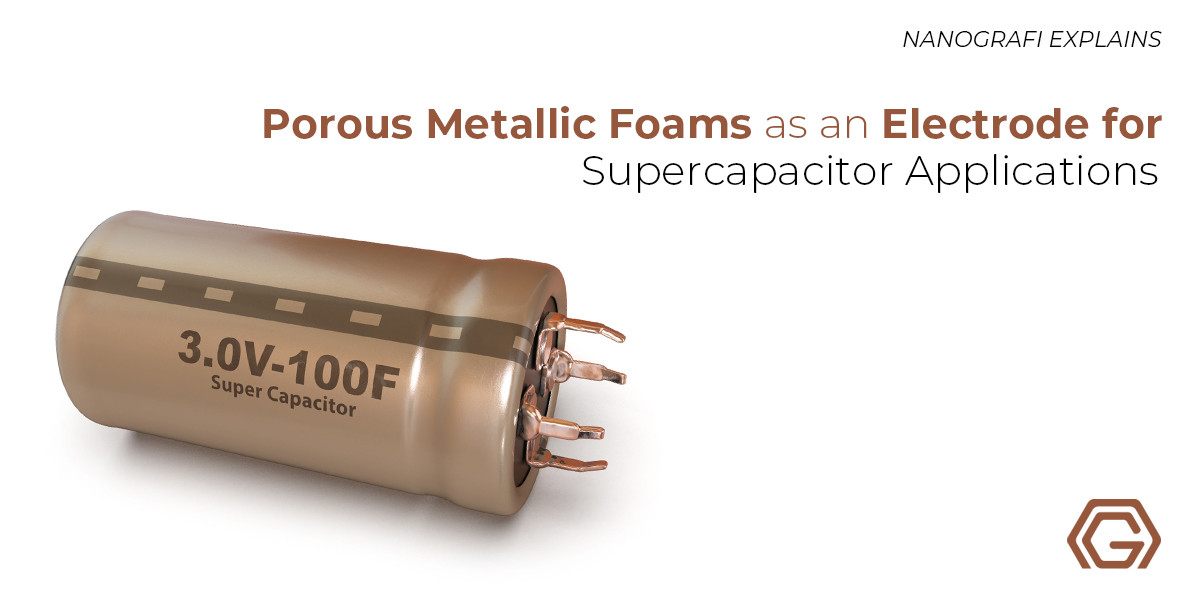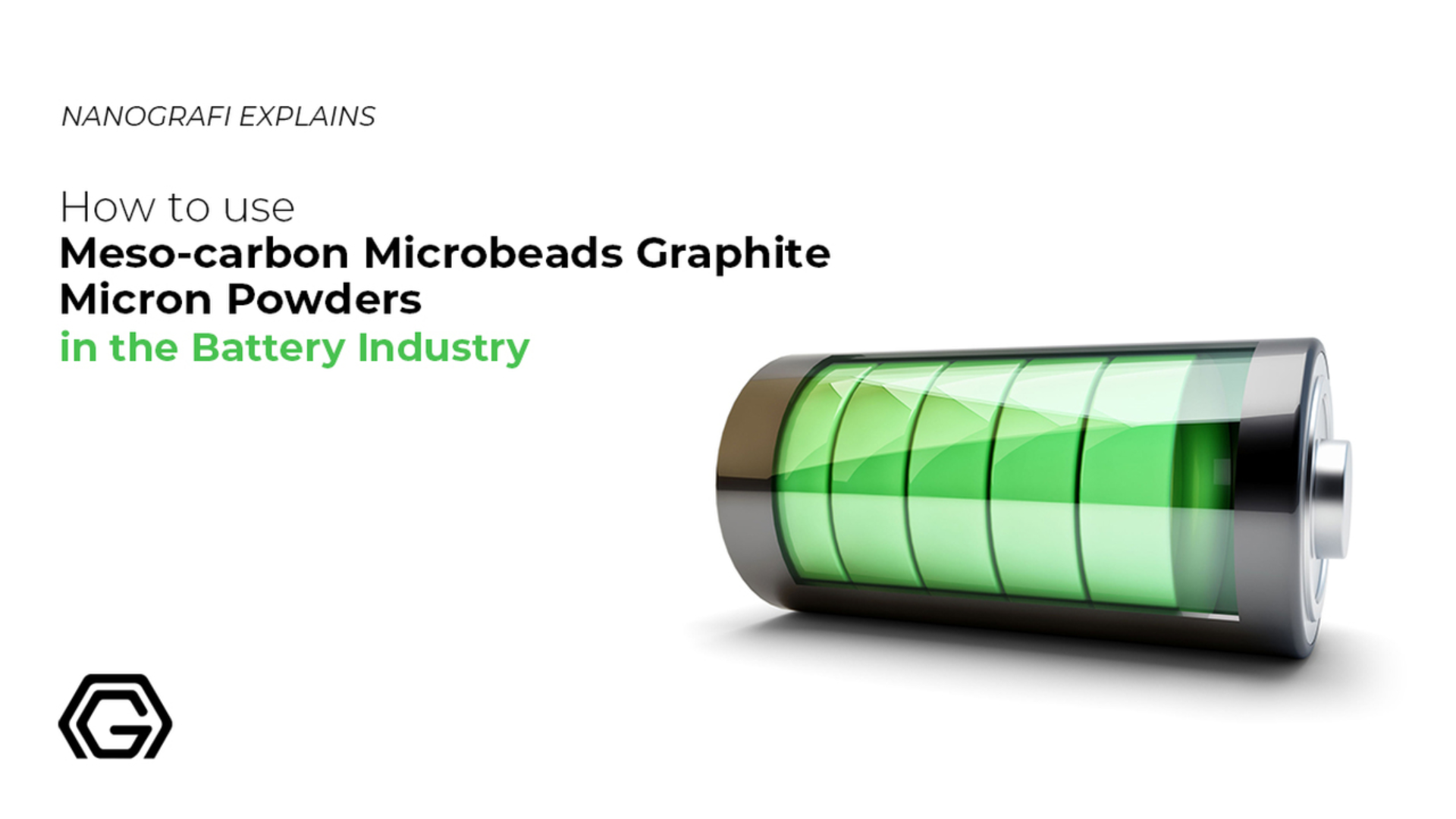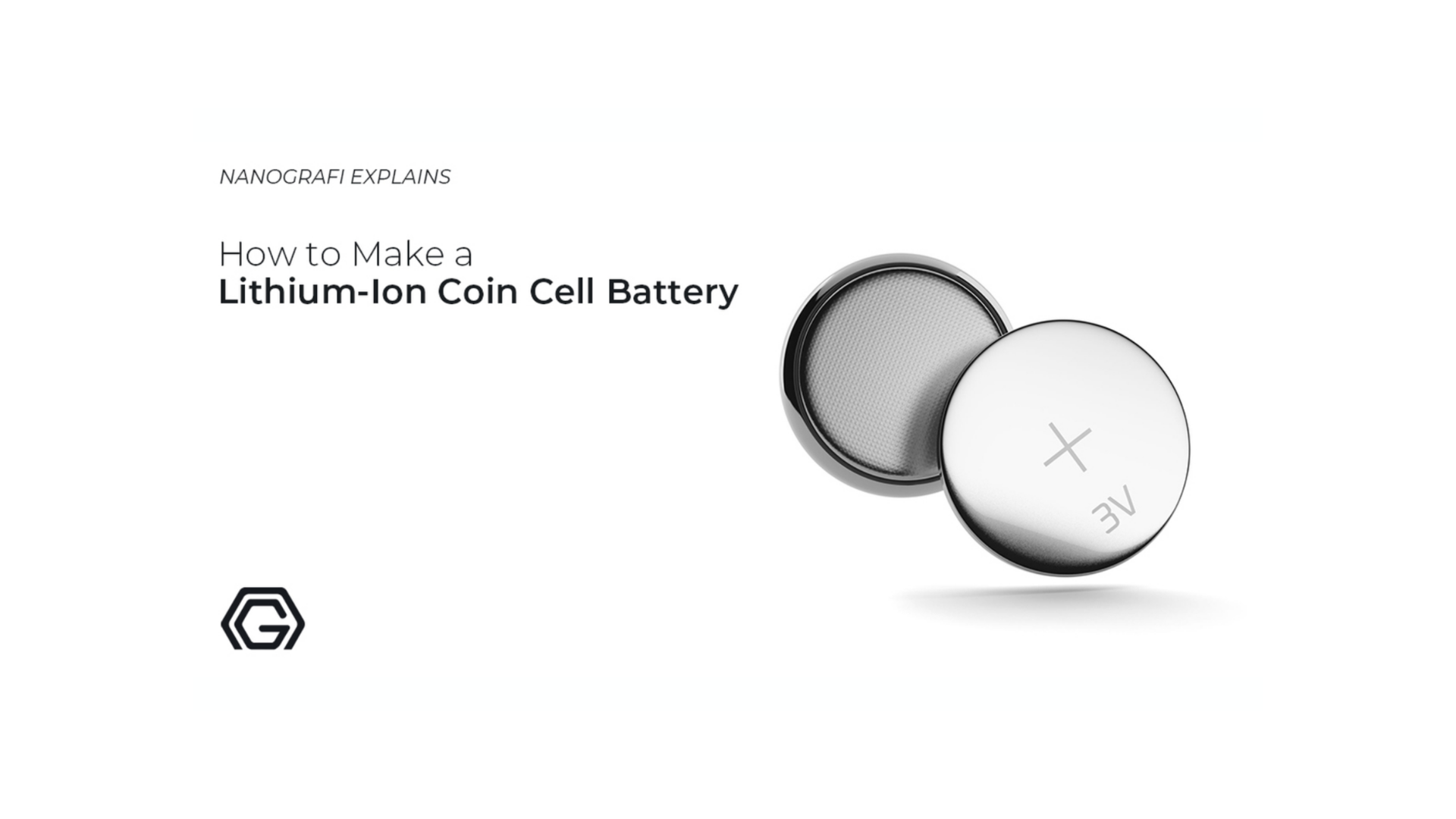Porous Metallic Foams as an Electrode for Supercapacitor Applications
Supercapacitors are most commonly also known as ultracapacitors owing to the high capacity capacitor that they are capable of exhibiting. In this case, their capacitance values are extremely high in comparison to the other capacitors however their voltage limits will be lowered in correspondence.
These are capable of storing higher levels of energy which ultimately makes their working nature excellent in nature and rather more authentic. They possess excellent properties and characteristics because of which porous metallic foams are used as electrodes to enhance their applications and provide them with a much stronger base.
Introduction
An ultracapacitor, or supercapacitor (SC), is a capacitor of high capacity, with its capacitance value being way more as compared to the other capacitors, but with lower voltage limits, bridging the gap between the rechargeable batteries and electrolyte capacitors. As compared to the electrolyte capacitors, supercapacitor typically stores ten to a hundred times more mass or energy per unit volume, which can be used for accepting the charges and delivering them way faster as compared to batteries, tolerating way more charge and discharge cycles as compared to the rechargeable batteries.
Supercapacitors' Uses
There is the utilization of the supercapacitors in all those applications that demand various fast charging and discharging cycles, instead of long-term compact energy storage — in elevators, cranes, trains, buses, and automobiles, where their purpose of usage is burst-mode power delivery, short term energy storage, or regenerative braking. There is the utilization of the smaller units for the SRAM (static random-access memory) as power backup.
Supercapacitors don't use the conventional solid dielectric as every other ordinary capacitor does, instead, they utilize electrochemical pseudocapacitance and electrostatic double-layer capacitance, and they both add to the capacitor's total capacitance with some differences:
Electrochemical Pseudocapacitors
Conducting polymer electrodes or metal oxide are used by the electrochemical pseudocapacitors with an extreme amount of electrochemical pseudocapacitance additional to the double-layer capacitance. The faradaic electron-charge transfer is capable of achieving pseudocapacitance with electrosorption, intercalation, or redox reactions.
Derivatives or carbon electrodes are used here with way more electrostatic double-layer capacitance as compared to the electrochemical pseudocapacitance, obtaining charge’s separation at the interface between the electrolyte and conductive electrode’s surface in a Helmholtz double layer. As compared to the separation of charge in a conventional capacitor, the separation of charge here is way smaller than it is of some ångströms (0.3–0.8 nm).
Electrodes with different properties are used by the hybrid capacitors. Lithium-ion capacitor is one of the hybrid capacitors. One mostly displays electrochemical capacitance whereas the other mostly displays electrostatic capacitance.
Formation of the Electrolyte
An ionic conductive connection is formed by the electrolyte between the two electrodes, distinguishing them from the conventional electrolytic capacitors where there is always a presence of the famous electrolyte, for instance conducting polymer or MnO2, and the dielectric layer. The conducting polymer is the second electrode's part (the positive electrode, or the cathode). Designs for symmetric electrodes, or, asymmetric electrodes, can polarize supercapacitors, by a potential that's used while manufacturing.
Characteristics of Supercapacitors
Capacitor equivalent circuit
Current is limited by the equivalent series resistance ESR. It is also accountable for electrical losses. Having a low series resistance is absolutely important for getting high power. When it comes to the self-discharge time of the capacitor, the only one that’s responsible is the parallel resistance Rp. In order to limit the leakage current, the value of the parallel resistance should be as high as possible. t = Rp C is the self-discharge time constant t.
Ragone Plot Coordinates
Load resistance RL is the Ragone plot's parameter actually, meaning that power and energy are shown by the plot, which can be dissipated for various values of the load resistance. A parameter defined by the relation t = at0, RS + RL= a RS, was introduced for simplifying the relations.
Available Power
The current will be higher when there is a smaller load resistance but there is a strong reduction of the voltage drop on the load. A smaller power being delivered to the load is the consequence. At the maximum power density point, the curve is interrupted on the Ragone plot’s right side. In the low power range on the left side, the load resistance is way more as compared to the internal resistance of the capacitor.
Available Energy
The first observation was that there is the availability of only half stored energy at the maximum power rate as the internal resistance of the capacitor dissipates the second half of the stored energy. The current is extremely significant in this high power condition, and in the capacitor, the losses are proportional to the internal resistance time and the square of the current. There was a second observation that all the energy E’max is almost available for the food in the ‘low’ power condition. The current is extremely small for the internal resistance of the same capacitor internal, making the losses extremely small. The above comments are accurate for the secondary and primary batteries.
Supercapacitors' Performance
Reaching the highest power and energy densities is the EDLCs purpose for getting the smallest component weight and volume for a particular application. The Montana goals have been concretely fixed to 5 kW/kg for the power density and energy density, it is fixed to 5 Wh/kg. Increasing capacitance density is important for meeting these values, lessening the ESR, and increasing the cell operating voltage. Efforts are being made on studying electrolytic decomposition voltage, the separator materials, the grain to support and grain to grain contacts, and electrode accessibility and surface.
Properties of Supercapacitors
Energy can be stored and delivered by the Supercapacitors at comparatively high rates. Supercapacitors are a kind of energy storage system. The energy storage mechanism is the separation of the simple charge at the electrochemical interface between the electrolyte and the electrode. As compared to the conventional dielectric capacitors, higher energy density is possessed by the supercapacitors. The high power, and high cycle life, turned the supercapacitor good for a lot of applications, for instance, medical applications, wireless power tools, quick-charge applications, cell phones, and electric vehicles.
Usage of Various Materials
Supercapacitors are classified into two types based on the materials that are utilized in the synthesis of the supercapacitors, pseudocapacitors (redox supercapacitors) and double-layer supercapacitors. The enhanced capacitive performance and increased surface area are what make the usage of the nanostructured materials for the supercapacitor electrodes interesting. Electrochemical deposition, dealloying, sol-gel method, chemical vapor deposition, and chemical bath deposition, are some of the methods to synthesize the supercapacitor materials.
Electrodeposition’s Benefits
High control on parameters like rate of deposition, uniformity, the thickness of the film, low capital investment costs, and mass production are included in the advantages of the electrodeposition method. When it comes to making porous metal foams, the low-cost, simple method is the dynamic hydrogen bubbling template (DHBT) process. Electrodeposited NMFs are made on stainless steel substrates with high electronic conductivity. Electrodeposited NMFs are advantageous to produce supercapacitor electrodes as there is an application of the active materials directly on the current collector.
Morphology of the Surface
The bath composition and the parameters of electrodeposition mainly determine the porous metal foam's surface morphology that's achieved through this process. The additives in the electrolyte can adjust the porosity that is capable of causing bubble stabilization and it causes the problem in colliding bubbles and therefore, it can influence the deposition of the metal itself.
Electrodeposition
Electrodeposition cells are made up of stainless steel cathode and graphite anode that are joined to the negative and positive poles of a dc power supply type. There was immersion of those two electrodes in an electrolyte that contained some additives, and Cu and Ni salts. You can also see the working parameters like deposition time, deposition current density, temperature, and chemical composition. The utilized electrolyte was made up of 1 M HCl, 1.5 M H2SO4, 0.01 M CuSO4.5H2O, and 0.5 M NiSO4.7H2O.
Electrochemical Measurements
Zra analyzer/Galvanostat/4 Potentiostat/Gamry PCI300/4 is the electrochemical workstation with a personal computer that was used to carry out the electrochemical measurements. A three-electrode cell made up of an electrodeposited specimen was utilized as a working electrode with 0.87 cm2 of the active area, an Ag/AgCl reference electrode, and a Pt counter electrode. At 25 degrees Celsius, there were polarization tests at 2 mV/min of scan rate. Experimental data were statistically fitted by the Echem Analyst 5.21 to the Stern–Geary model for a corroding system and selected that data automatically which lies within the Tafel's region from the open circuit potential ‘OCP’ to the corrosion potential. The cathodic and anodic Tafel’s slopes, corrosion potential, corrosion current density, and corrosion rate can be calculated by the Echem Analyst.
To get more information about battery equipments,
you can read our blog post here.
Cyclic Voltammetry Measurements
The potential from the starting potential was linearly swept to carry out the cyclic voltammetry measurements at 75 mV/s of scan rate from the starting potential into the positive direction (−0.2 to +0.8 V) for forming one whole cycle. 1 M KOH was used to carry out all of the electrochemical measurements. As an average of the three measurements, all testing method measurements were taken.
Electrodeposition Rate
It was indicated by the achieved results for the electrodeposition rate that a very major role is played by the applied current in the electrodeposition process. Another factor is the time that's utilized for enhancing the deposited Ni-Cu foams' mass. With an increase in the electrodeposition current density, the electrodeposited time increased too along with the deposition time. For samples that were electrodeposited at 1.8 A/cm2, there was a significant reduction in the electrodeposition rate. This can be because of the deposited layer's high porosity at 1.8 A/cm2, it will be discussed below.
EDX Chemical Analysis and Surface Morphology
The well-known 'Hydrogen Bubble Templating Mechanism' is the reason for the porous structure. Metal deposition forms metal grains by occurring preferentially in the interstices between the H2 bubbles. Hydrogen serves a role as the famous template but that's not the only reason for it being chosen. The other reasons are its low toxicity and low cost, and most significantly, no need for template removal, which is needed typically in the other synthetic strategies. Also, the hydrogen template-assisted electrodeposition is a one-step method as during the deposition process, there is automatic detachment of the hydrogen from the growing porous layer.
Nanostructured Metallic Foams
Nanostructured metallic foams (NMFs) are 3D (three-dimensional) structures of the interconnected pores with the nano-ramified walls made up of the dendrites, metallic particles, or the other morphologies that join good thermal and electric conductivity with low density and high surface area.
Optimization
Producing nano-ramified foam structures with accurately tailored architectures is possible by optimizing the parameters of electrodeposition for improving the mass and the charge transfer processes. There was no formation of any 3-dimensional dendritic structure at 30 deposition time for all the applied current densities. There is the formation of only rough films in these conditions that are made of angular grains with some isolated dendrites that are distributed randomly.
Durations of Deposition
Dendritic foam-like morphology was used to characterize the resulting films for longer durations of deposition with nearly circular pores that are distributed randomly. At 1.8 A/cm2 of the current density, we achieved the most uniform pore morphology. More ramified thinner dendrites are formed by increasing the electrodeposition current density up to 2 A/cm2. There was still visibility of the continuous thin films that are made at the interface of the substrate. Moreover, if the deposition time is longer, the produced pore size will be coarser because of the growth of hydrogen bubbles over time and the coalescence of adjacent bubbles. In conclusion, there are two reasons for the rise of the metallic foam, one is the pore walls having an open dendritic structure and the other is the existence of pores.
EDX Chemical Analysis
Copper and nickel were contained by the layers according to the porous Ni–Cu electrodeposits' EDX analysis. There was the detection of oxygen's residual amounts. The content of Ni ranges from 63.38-to 81.48% based on the deposition time and the current density. 18.16% to 36.62% is the range of the corresponding content of copper. Copper and metallic nickel's presence was indicated by the detection of the low oxygen content. Generally, an increase in the content of Cu in the porous foams happens when both the current density and deposition time is being increased.
Potentiodynamic Polarization Test
As a function of electrodeposition time and current density, there were testings of the electrodeposited Ni–Cu metallic foams’ potentiodynamic polarization curves in 1 M KOH. It was seen that with an increase in the electrodeposition time, there was a shift toward higher cathodic and anodic current densities. Increasing both deposition time and current density can increase the corrosion rate. For porous Ni-Cu layers, 5.3 mpy was the lowest registered corrosion rate and at 1 A/cm2, they were electrodeposited for 30 seconds. A rough surface with some dendrites characterizes the morphology of the surface in this case.
The Surface Film’s Characteristics
The highest content of nickel is contained in this case by the surface films (22.33% Cu, 77.67% Ni). A 1.8 A/cm2 of current density was used for 150 s to electrodeposit the porous Ni-Cu layers, and those layers had the 263 mpy, which is the highest corrosion rate detected. 33.55% Cu and 64.98% Ni are contained in these layers according to the EDX analysis. A Fine dense ramified dendritic structure's formation was used to characterize the morphology of the surface, referring to the SEM images.
Polarization’s Values
According to observations, when both the deposition time and current density increase, there comes a decrease in the values of polarization resistance, corresponding to increasing the Ni-Cu deposits pore size, referring toward an electrode active surface area's fraction by hydrogen gas bubbles which prevents the electrolyte access. In conclusion, the highest apparent catalytic activities can be manifested by porous Ni-Cu electrode having a low Rp (75.27 ohm) value, which corresponds to the conditions of electrodeposition that are as follows; 150-s deposition time, 2 A/cm2 current density.
Common Characteristics
Most of the circuits have a common characteristic of having the constant phase elements (CPE), polarization resistance (Rp), and solution resistance (Rs). There was an appearance of Warburg Wd for Ni/Cu 2 A/cm2–(30–90–150)s and Ni/Cu 1.8 A/cm2–(30–90–150)s.
Cyclic Voltammetry
As compared to the reports of the Ni oxides cyclic voltammetry in the alkaline solutions, the cyclic voltammetry of the Ni–Cu foams is similar. Upon potential cycling and Ni-Cu foams immersion in the KOH alkaline solution, the Ni-Cu foams are oxidized as suggested. Copper goes through one redox reaction Cu (II)/Cu (III) in this potential range, involving CuO surface species. Although, there was no detection of the corresponding voltammetric peak in the voltammetric curves. In conclusion, copper oxidation reactions are hindered for the Cu–Ni alloys because of the production of a protective nickel hydroxide film.
To get more infromation about battery equipments,
you can read our blog post here.
Supercapacitors' Applications
Small size capacitors like gold caps from Tokin are broadly utilized today as the maintenance-free power sources for the microcomputers and IC memories. Applications in the power quality, telecommunication, and reliability need to get uninterrupted power supply (UPS) installations, are among the applications in the traction domain that are currently being proposed for the large size supercapacitors, along with load leveling in the hybrid and the electric vehicles. Supercapacitors may generally adapt to the two application domains that are listed below;
First one
The first one is corresponding to the high power applications in which no representative access is possessed by the batteries. New opportunities will be allowed by the EDLCs for power electronics because of their high power capability. These capacitors can provide all those applications for which there is a need for the short time power peaks. Starting of heavy diesel engines or fast energy management in the hybrid vehicles are some of the typical examples in which there is a need for a big current during a short time.
Second One
The second one corresponds to the low power applications, where the batteries can be more appropriate but don't have enough lifetime performance or they are starting to have maintenance problems. Even if the Supercapacitors are bigger, they provide way enough benefits for substituting the batteries. The most representative examples in this field are the UPS and security installations.
SAM
An additional battery is needed by most of the applications for ensuring a particular amount of autonomy where there is the involvement of the Supercapacitors. It’s good that the HTA-Lucerne is famous in the applications with the supercapacitors and their integrated intelligent electronic control management systems, Montana components and the HTA-Lucerne became partners to develop super Accumulator Module (SAM) that are already mentioned, consisting of the hybridization of batteries and the supercapacitors with controlling the universal application intelligently.
ECDL's parallel connection with a battery should be done cleverly since a different fundamental dynamic behavior is possessed by the capacitors and batteries. The capacitors are the electrostatic charge devices whereas the batteries are the faradaic (redox) storage devices. The voltage stays in principle constant during their charging or discharging. There is a proportional change of the voltage to the charge Q.
Voltage Repartition
The very low operating voltage of the supercapacitors is the major complication of the supercapacitors. This voltage stays between 2-3 volts and hopefully someday to 4 volts in the organic electrolytes case. Much higher voltages of more than 700 V are needed for the most powerful applications. These operating voltages have some main reasons that on one side lighter and smaller conductors are required by the current reduction, whereas the voltage drop in the semiconductors is another reason which is comparatively way less significant than a 2.5 V application. The Supercapacitors are connected in a series for forming a system so that they can reach the desired voltage for the application.
Conclusion
Supercapacitor applications are enhanced by the use of porous metallic foams as electrodes for these capacitors which is due to the resilience of supercapacitors while being used in various industries and fields. Their excellent properties and characteristics enhance their productivity and working capacities.
To get more information, you can visit Blografi.
References
https://www.frontiersin.org/articles/10.3389/fmech.2020.00035/full
https://cutt.ly/xJULyJs
https://www.sciencedirect.com/science/article/abs/pii/S2352152X18301634
https://www.garmanage.com/atelier/root/public/Contacting/biblio.cache/PCIM2000.pdf
https://www.mdpi.com/2079-6412/10/9/822/pdf
Recent Posts
-
Advanced Materials for Unmanned Aerial Vehicle (UAV) Protection Against Laser
Consider a UAV on a critical mission, rendered inoperative by a sudden laser attack. With the increa …26th Jul 2024 -
Simulation and Modeling of Material Properties
Our world is composed of a dazzling array of materials, each with its own unique properties that dic …19th Jul 2024 -
Advanced Coatings for Superior Corrosion and Wear Resistance
Corrosion and wear pose significant challenges across various industries, leading to substantial eco …12th Jul 2024








